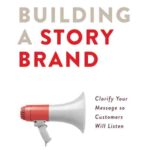How do you price your product or service to achieve your strategic objectives such as building customer loyalty, ensuring more consistent business cash flow, or encouraging customers to buy in larger quantities? Here are14 pricing strategies to drive specific customer behaviors.
Once you know the minimum price you can accept to meet or exceed your break-even, you are ready to price your products or services to achieve strategic business objectives.
Pricing your product or service properly is one of the most overlooked marketing strategies you can employ to achieve the business results you desire. By employing one or several of these pricing strategies you can drive customer behaviors to meet your business goals.
Volume Discount
The cost to acquire a new customer, if spread out over a larger order, allows you to offer a discount on volume purchases. When you buy a magazine subscription you pay less the more years you order because the customer acquisition cost is spread over a longer period.
Other times the shipping and handling costs are pretty much identical, even for larger-sized units, so you can spread out these costs over larger product volumes. The cost difference between a half-gallon of milk and a full gallon of milk is only about 20%, even though you get twice the volume of milk.
Loss Leader
As a way to obtain new customers, you can offer your product or services at a price that is less than your direct cost. Cell phone companies offer new phones for less than the actual cost of the phone in exchange for an extended contract. Razors are often sold at a loss based on the idea that the razor is useless without blades, which are then sold for a healthy margin.
Products and services offered at a steep discount or for less than their cost are called Loss Leaders. Loss Leaders can be an effective pricing strategy to attract new customers or get customers into your store.
Units Available
It is my experience that no two people pay the same price when they book an airline ticket. The list price for an airline seat varies depending on the number of seats already sold and the closeness of the purchase date to the departure date. If an airline fears that a flight will have too many empty seats, they reduce the price to sell more tickets. If they are experiencing robust sales they will increase the price to ensure they earn the maximum revenue.
Day of The Week
Anyone that has ever shopped for the best airline ticket prices and is flexible on their travel dates knows that flights are cheaper on Tuesday through Thursday and higher on Monday and Friday. Since most business people travel on Mondays and Fridays demand for these seats is high, driving up the per-seat prices. Since flights on Mondays and Fridays are often full, the airlines want anyone that can travel on a different day to do so. They price the other days more cheaply to drive traffic to these less-traveled days.
Season
Businesses that have inventory often have a seasonality to their sales. Holding unsold inventory for a year to wait for the next peak season ties up valuable capital. Savvy business owners mark up prices when demand is high and steeply discount merchandise at the end of the season to convert surplus inventory into cash.
For example, people generally BBQ in the summer and particularly during holidays, so BBQ grill prices are generally not discounted during the summer or around popular holidays for barbecuing. However, excess inventory at the end of the summer is often sold at discount, or sold to discount outlets, to convert inventory into cash. After all, it is hard to sell charcoal briquettes in winter (unless you live in the southern hemisphere). Likewise, coats sell for list prices during the winter and are steeply discounted as the weather turns warmer in Spring.
Sometimes the price widow is not based on a season but is tied to a specific day. Christmas ornaments are priced to maximize revenue before Christmas and are steeply discounted after the holidays. The same can be true for fireworks before and after the 4th of July. Pricing by season does not only apply to product companies but also to service companies. It is hard to find landscaping work in the dead of winter or to teach people to snowboard in the summer.
Time-of-Day
Many businesses have peak demands at various times of the day. Popular restaurants are generally full between 5:30 pm and 7:00 pm for the dinner rush. Many restaurants have early bird specials to drive customer traffic for those more cost-sensitive customers or for customers with a more flexible dinner schedule to fill their restaurant during less busy times of the day.
Cellphone companies and airlines often charge different rates for Peak, Off-Peak, or Weekend hours.
Loyalty (Repeat Business)
Customer acquisition costs represent a significant indirect expense. Once you acquire a new customer you should implement pricing strategies to keep them coming back again and again. When you fly you often have a choice of airlines that fly the same route. To encourage repeat business many carriers offer frequent flier miles that equate to perks, such as early boarding, or that can be cashed in for discounts on future flights.
Businesses from liquor stores to sandwich shops frequently offer punch cards. Once you achieve the requisite number of punches or stamps you can trade them in for a discount.
Loyalty (Membership)
If a customer has to go to some effort and expense to join a club, they often develop a sense of loyalty. Sam’s Club and Costco restrict shoppers unless they have a membership, which they get customers to purchase up front. Good Sam’s (a camping membership) allows members to get discounts at participating campgrounds while non-members pay the full rack rate.
You can offer tier memberships such as Gold, Silver, and Bronze to equate to different levels of discounts and/or other benefits. This can encourage increasing levels of loyalty by creating prestige associated with the increased membership levels.
External Factors
Within a few hours after the September 11th attacks, you could not find patriotic items like flags anywhere. Even before the day was out there were secondary markets set up selling flags and other patriotic items for more than ten times their price before the attack. Many store owners were not collecting the price premium.
Supply and demand should drive prices. When external factors create unexpected demand, the savvy entrepreneur should adjust prices to maximize profits. If they don’t, others will capture the premium by creating a secondary market.
On an unexpectedly hot day at a football game, a cold bottle of water should be offered at a premium rate, while on an unexpectedly snowy day a steaming cup of hot chocolate should be sold at a premium. Failure to adjust your price based on external events means that you run the risk of selling all your stock prematurely. This leaves your customers willing to pay more for your products or services, but with no real option but to buy them on the secondary market.
Often the time window to maximize profits is short and fleeting. Consider the Furby craze a few years ago. Stores had waiting lists and sold out of the product before they could get them on their shelves. Buyers lucky enough to get a Furby sold them on eBay and collected huge profits, yet today you couldn’t give one away.
Status Factor
Contrary to popular belief, people are really not motivated by money. They are in fact motivated by status. More money simply gives folks the ability to buy more status symbols, which they can use to flaunt their status. That being said, most people equate a higher price with greater status.
We all know that a cup of coffee at Starbucks costs more than the same size cup from 7-11 or McDonalds. Sporting a Starbucks cup in public makes the owner feel kind of special like you are a connoisseur of fine coffee because the more you pay for something the bigger the status symbol it is.
A woman’s handbag holds the same kinds of stuff and costs about the same to make regardless of it being produced by Wilson Leather, Prada or Coach, yet the price for luxury handbags is an order of magnitude higher.
Ibuprofen costs more under the Advil name than the exact same chemical product offered under the Kroger label because the name-brand product holds more status than the generic version.
Limitation, Availability, or Scarcity
Limited availability or scarcity is a powerful tool to create premium pricing. There is only one Super Bowl per year with only a fixed number of seats. Tickets prices rise to meet demand. Furthermore, there are only so many ads’ spots during the Super Bowl. Here again, prices rise to balance out demand.
The Organization of the Petroleum Exporting Countries (OPEC) historically placed self-imposed limits on oil production to drive up costs.
Pricing your product or service to the relative need of the consumer at a specific moment in time is also a powerful tool to extract the maximum revenue from a customer.
Consider what a customer with low blood sugar would pay for your last candy bar, or what someone is willing to pay for your last generator during a blackout, for your last snowblower during a major snowstorm, or my personal favorite, for a pay toilet at the Oktoberfest.
Cash Flow
Small business owners often live and die by controlling their cash flow. Having a customer pay for products and services as they use them may not provide sufficient cash flow to your business.
Getting the customer to prepay for products or services can be the difference between surviving and dying.
Gift cards require you to front-load or prepay and then debit the card with each use.
A slightly more advanced version of the prepay pricing strategy involves bulk buys. Cell phone companies sell bulk data plans and charge huge fees if you go over. This forces customers to pay upfront for the largest plan they expect to use, even if it means buying a larger data plan than they might have otherwise chosen to ensure they do not get hit with very high-priced overage fees.
Available Alternatives
Sometimes you have a new product or service category with little or no competition and are free to charge whatever you want for early adopters.
When I had an Invisible Fencing franchise the sum of direct costs for a self-install kit was about $100 in parts and another $100 to cover the parent company’s national marketing efforts. My indirect expenses amounted to another $150 per unit. Therefore, I had a breakeven of about $350. We sold the self-install kit for $750 in those days. One reason we could charge a premium price was that we were a new product category protected by a patent.
The other reason and the subject of this pricing strategy are based on the customer’s other options. Our Invisible Fencing customers essentially had three choices: buy a stockade (wood) fence, a chain-link fence, or our invisible fence. The stockade and chain link options for a typical backyard installation averaged about $1,500 back then. So even though our product produced high-profit margins at the time, relative to the customer’s other options it was a bargain.
Customer Segment
Each customer is different in terms of their needs and ability to pay. There is no rule that says that every customer needs to pay the same price for the same product or service.
Working on a government contract has more overhead than working on a commercial account. As such, the billing rate we used on government contracts was often higher to capture our additional efforts.
Restaurants, particularly buffets, often offer a senior rate because seniors generally eat less and eat earlier than non-seniors.
McDonald’s offers similar burgers on the “Buy by the Number” board to burgers on the value menu. Often customers can order a la carte and get the same meal for less money.
This pricing strategy weeds out the cost-sensitive from the less cost-sensitive shopper.
Car dealers are the masters of customer-based pricing. They display a high sticker price on the car window. During the test drive, the salesman assesses the customer’s price sensitivity and haggling ability to determine the final price they are willing to offer the prospective car buyer.
Follow this link to more pricing concepts, strategies, and tactics available in our Advice Navigator
How can you use your knowledge of pricing strategies to achieve your strategic objectives?












